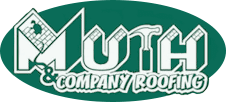Closing on a home is an impressive accomplishment for families that have been saving for years to afford a down payment. Yet closing is only the beginning of years of ongoing expenses, from mortgage and property tax payments to maintenance and repair. Setting aside money in an emergency fund is a wise move, especially if you’ve purchased an older home.
Here are some of the most expensive home repairs and how to avoid them.
Foundation Problems
Shifting soils due to freeze-thaw cycles, or heavy rains followed by prolonged drought can cause a foundation to crack or settle. Signs of the problem include doors that won’t close, windows that don’t fit well in their frames, sloping floors, and cracks appearing around the house. Repairs can run from three to five figures.
Keep soil moist around the foundation with soaker hoses during a drought. Ensure proper drainage is away from the foundation, and check the slope of your yard to make sure it’s enough to cause water to run away from, rather than toward, your foundation.
Roof Repair
It’s one thing if a storm rips the roof off or drops a tree on top of it. Insurance may pay for that. But insurers won’t pay for damage that develops over years of neglect. Failing to clean the gutters which result in ice dams can damage roofs and cause leaks that create lasting damage. Neglecting to replace missing shingles or not addressing eave rot and fascia can result in damage that’s expensive to repair, costing anywhere from several hundred to several thousand dollars.
Broken Sewer Lines
The very definition of a stinking mess, a broken sewer line can cause nasty backups throughout your home. Puddles in the yard when it hasn’t rained recently may indicate a leaking underground pipe. Excavation, repair, and replacement of disturbed landscaping can run in the high four figures.
Although age and soil conditions are beyond your control, you can minimize the risk of sewer line problems by avoiding pouring grease down the drain or flushing items that shouldn’t be flushed. Keep trees 10 feet away from the location of the sewer line in your front yard, and have a licensed plumber perform a camera inspection and rodding. If necessary, do this annually.
Other expensive fixes include HVAC replacement, repairing or replacing a water heater or boiler, and removing toxic substances such as mold or asbestos. Before you buy a home, arrange for a professional home inspection that includes identifying signs of pest problems, mold, or asbestos. Inspecting a home you own and testing for the presence of these things is an important precaution to protect your health during renovations.
Avoid expensive home repairs by implementing regular roof maintenance and inspections of your plumbing and foundation. Catching and fixing problems early will save you money and time.


